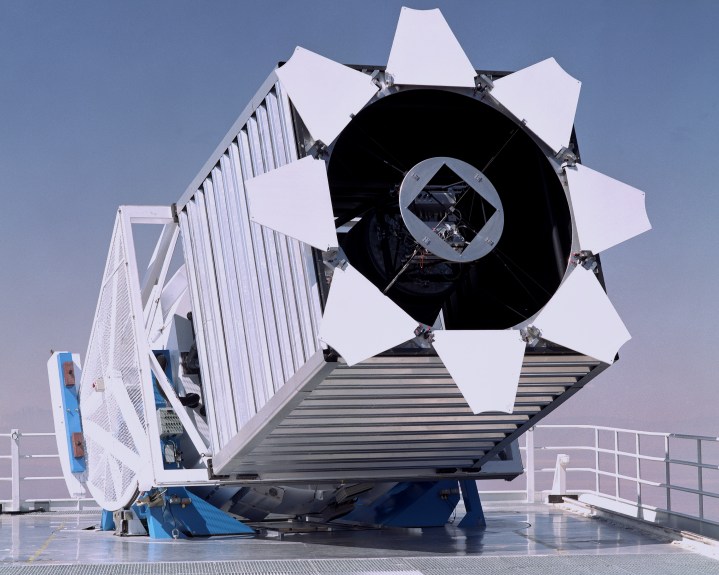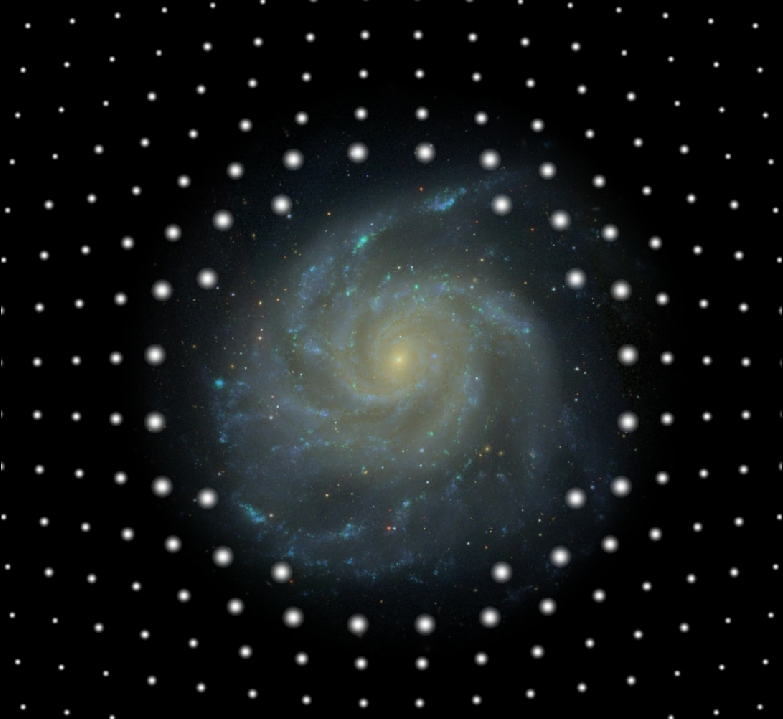These findings, accepted for publication in The Astrophysical Journal, detail the subtle distortions that light undergoes as it travels from distant quasars through the web of dark matter and galaxies before reaching observers here on Earth.
The SDSS discovery ends a two decade-old disagreement between earlier magnification measurements and other cosmological tests of the relationship between galaxies, dark matter and the overall geometry of the universe. "The distortion of the shapes of background galaxies due to gravitational lensing was first observed over a decade ago, but no one had been able to reliably detect the magnification part of the lensing signal", explained lead researcher Ryan Scranton of the University of Pittsburgh.
As light makes its 10 billion year journey from a distant quasar, it is deflected and focused by the gravitational pull of dark matter and galaxies, an effect known as gravitational lensing. The SDSS researchers definitively measured the slight brightening, or "magnification" of quasars and connect the effect to the density of galaxies and dark matter along the path of the quasar light. The SDSS team has detected this magnification in the brightness of 200,000 quasars.
While gravitational lensing is a fundamental prediction of Einstein's General Relativity, the SDSS collaboration's discovery adds a new dimension. "Observing the magnification effect is an important confirmation of a basic prediction of Einstein's theory," explained SDSS collaborator Bob Nichol at the University of Portsmouth (UK). "It also gives us a crucial consistency check on the standard model developed to explain the interplay of galaxies, galaxy clusters and dark matter."
Astronomers have been trying to measure this aspect of gravitational lensing for two decades. However, the magnification signal is a very small effect -- as small as a few percent increases in the light coming from each quasar. Detecting such a small change required a very large sample of quasars with precise measurements of their brightness. "While many groups have reported detections of cosmic magnification in the past, their data sets were not large enough or precise enough to allow a definitive measurement, and the results were difficult to reconcile with standard cosmology," added Brice Menard, a researcher at the Institute for Advanced Study in Princeton, NJ.
The breakthrough came earlier this year using a precisely calibrated sample of 13 million galaxies and 200,000 quasars from the SDSS catalog. The fully digital data available from the SDSS solved many of the technical problems that plagued earlier attempts to measure the magnification. However, the key to the new measurement was the development of a new way to find quasars in the SDSS data.

The SDSS telescope at Apache Point, New Mexico

